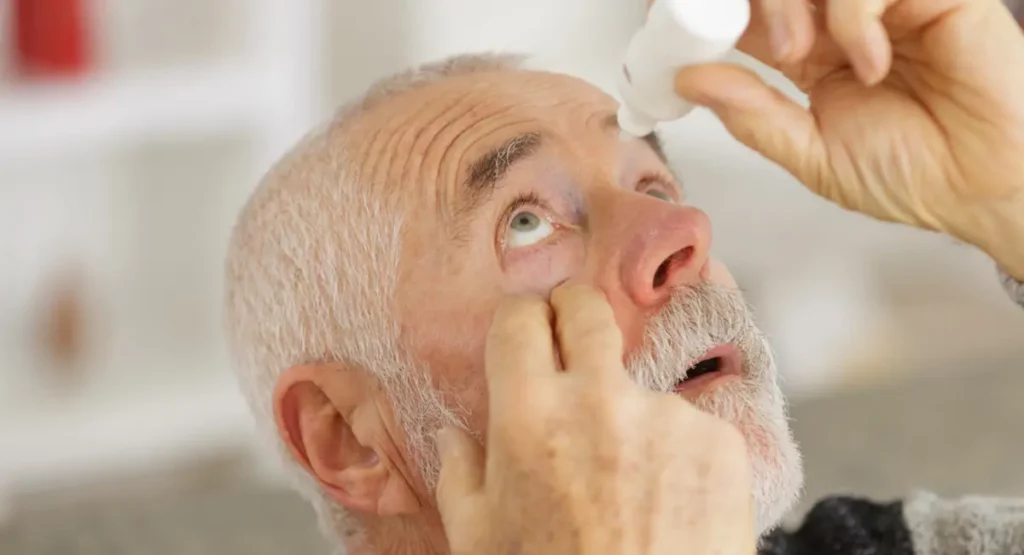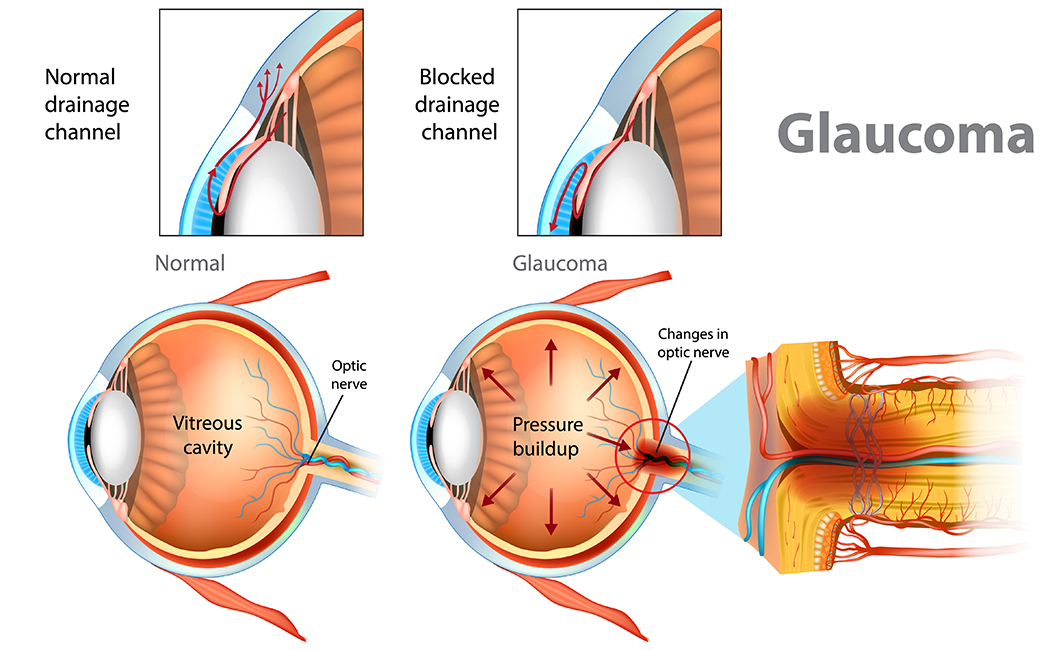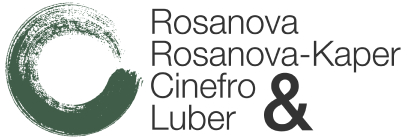Laser procedure proves as effective in lowering vision-threatening intraocular pressure

Once every other month or so, Walter Ciak will take a day off from work and spend a three- or four-day weekend doing what he’s loved to do most since childhood: camping. Walter and his family don’t really rough it, though.
“No, we have a popup camper,” Walter explains. “It’s a nice getaway, a lot of fun, and there’s lots of nice places around Melbourne to go. Sebastian Inlet is really nice. The state parks are really nice, too, especially Blue Springs and Manatee Springs.
“I moved to Florida from New York about four years ago, and up there I used to go camping in the Adirondacks and around Niagara Falls. That was nice, too. My father first got me into it. He used to take me when he went camping, and I’ve always enjoyed it.”
Like most everyone who has gone camping, Walter, 58, has occasionally suffered the irritating effects of campfire smoke getting into his eyes. Unfortunately, Walter spent years looking as if he was suffering from those effects even when he wasn’t.
That was all because of the eyedrops he was taking to combat glaucoma, a condition in which an imbalance of the fluid flowing in and out of the eye causes an increase in intraocular pressure (IOP).
Left untreated, this increase in eye pressure can damage the optic nerve, which can lead to severe vision loss. To prevent such an outcome, glaucoma sufferers are typically prescribed eyedrop medications designed to lower IOP.
One medication is usually effective, but Walter needed three to keep his IOP in the normal range, and those drops left his eyes looking extremely irritated.
“I was putting two drops in each eye every morning, two more drops in each eye every evening and one drop in each eye just before bed,” Walter explains. “And because of that, my eyes were always red. There wasn’t a time when they weren’t red.
“My eyes didn’t hurt, but they looked like they hurt because they were so red. I always had people asking me, Are you OK? Your eyes are really bloodshot. And I was always like, No, I’m fine, and then I’d have to explain everything to them.”
That went on for nearly six years. Then, a year ago, Walter accepted a recommendation from the doctor who recently started practicing in Melbourne.
That doctor is Mark Rosanova, MD, and the practice is now Rosanova Eye. Since taking Walter’s case, Dr. Rosanova has been suggesting an alternative treatment that would reduce Walter’s dependency on eyedrops.
Get Off Eyedrops
The treatment is a noninvasive outpatient procedure called selective laser trabeculoplasty (SLT), and Dr. Rosanova prefers it over eyedrops for glaucoma because studies show it is equally, if not more effective.
“Those studies show that in 93 percent of cases, SLT reduces intraocular pressure by an average of 30 percent,” Dr. Rosanova states. “That’s comparable to what you get with eyedrop medication, so what SLT does is allow patients to get off the eyedrops. And it lasts.”
-Dr. Rosanova
The highly regarded results of a study called the Laser in Glaucoma and Ocular Hypertention (LIGHT) trial show that 70 percent of patients undergoing SLT were still experiencing its positive effects six years after the procedure.
“And 90 percent of the time, the treatment lasts forever,” Dr. Rosanova adds. “And if it doesn’t, it can be done again without damaging the trabecular meshwork, which is the part of the eye that is directly treated through this procedure.”
Dr. Rosanova explains that the trabecular meshwork is a network of fibers in the eye responsible for draining a fluid called aqueous humor to help regulate intraocular pressure.
“The literature is overwhelmingly and consistently in favor of SLT because it treats the pathology,” he adds. “Glaucoma is a result of the meshwork not draining the fluid from the eye. When that fluid backs up, pressure goes up. SLT refurbishes the meshwork so it works properly.”
SLT is typically performed after it has been determined that eyedrop medications are not lowering the IOP or are causing significant side effects. But Dr. Rosanova is among those who believe the procedure can be used as an initial treatment for glaucoma.
“The problem with eyedrops is that people often forget to use them regularly, and when they don’t, their pressure goes up,” Dr. Rosanova says. “And even when drops are used regularly, the IOP varies because you put the drops in, wait six hours, then put them in again.
“So, the pressure goes up, then you beat it down again. The effect of SLT is greater and with more consistent control. And with SLT, you don’t have to deal with the burning, tearing and fluctuation in vision that many get from eyedrops because there are no side effects.”
Dr. Rosanova first performed SLT in 2005 and says it can be completed in as little as five minutes. He has also developed a protocol for the procedure, which is performed on one eye at a time several weeks apart.
“I always start by treating the eye that is most affected by glaucoma, and I do two treatments on that eye six weeks apart” the doctor says. “The goal of the first treatment is to get that first eye off the drops and to make sure the pressure is staying down without the drops.
“The second treatment is performed without the patient on any drops because some people have questioned whether the drops lessen the response to the laser. So, the second treatment is important because the patient is not on drops and getting the full effect of the laser.”
Each SLT procedure begins with the physician numbing the eye being treated. That eye is then fit with a special contact lens that includes a mirror, which allows the physician to clearly see the drainage angle in the eye.
Next, during the most significant step in the SLT process, a low-intensity laser that produces pulses of low-energy light is applied to the trabecular meshwork.
The application of the laser stimulates the melanin, or pigment, in specific cells within the eye, spiking a natural healing mechanism that cleans and rebuilds the trabecular meshwork in a way that improves drainage.
Other than causing some postoperative inflammation, SLT is considered a safe procedure that allows the body to heal itself. But even after hearing all that, Walter remained a bit skeptical.
“Just the idea of shooting a laser into my eye was a bit unsettling,” Walter says. “There’s always a risk with something like that, so I wanted to think about it, which I did for a couple of months. But when Dr. Rosanova asked me a second time, I said, Yeah, why not? Let’s do it.”

Looking Good
Walter agreed to undergo SLT early last year. The first procedure, he says, took about 10 minutes, and days later, he was able to reduce the number of eyedrops he was taking.
“I was taking three drops, and within a week, I was only putting two drops into that eye,” he says. “Then, a week later, I only had to put in one drop. And after a month, I was able to completely stop drops in that eye.”
Per Dr. Rosanova’s protocol, Walter returned about six weeks later for SLT on the other eye.
Walter is happy he is no longer taking any drops, and his eyes look normal again.
“My eyes have no redness to them at all,” he enthuses. “It’s been over a year since I last took any drops, and the pressure in my eyes is way lower than it was when I was taking them.
“With the drops, my IOP was somewhere in the upper teens, like 17 to 19. Since I had the SLT procedures done, the pressure is down around 12, so I could not be more pleased.”
Normal eye pressure is usually measured between 10 and 20.
“This really worked out well for me, and for a person who has the same condition as me, I would definitely tell them to give this a try,” Walter says. “And I would recommend Dr. Rosanova as well. He’s done great work for me.”
Do you want to learn more about cataract surgery with Dr. Rosanova? See the original article here or schedule an appointment at Rosanova Eye in Barrington or Hoffman Estates, IL, today!




